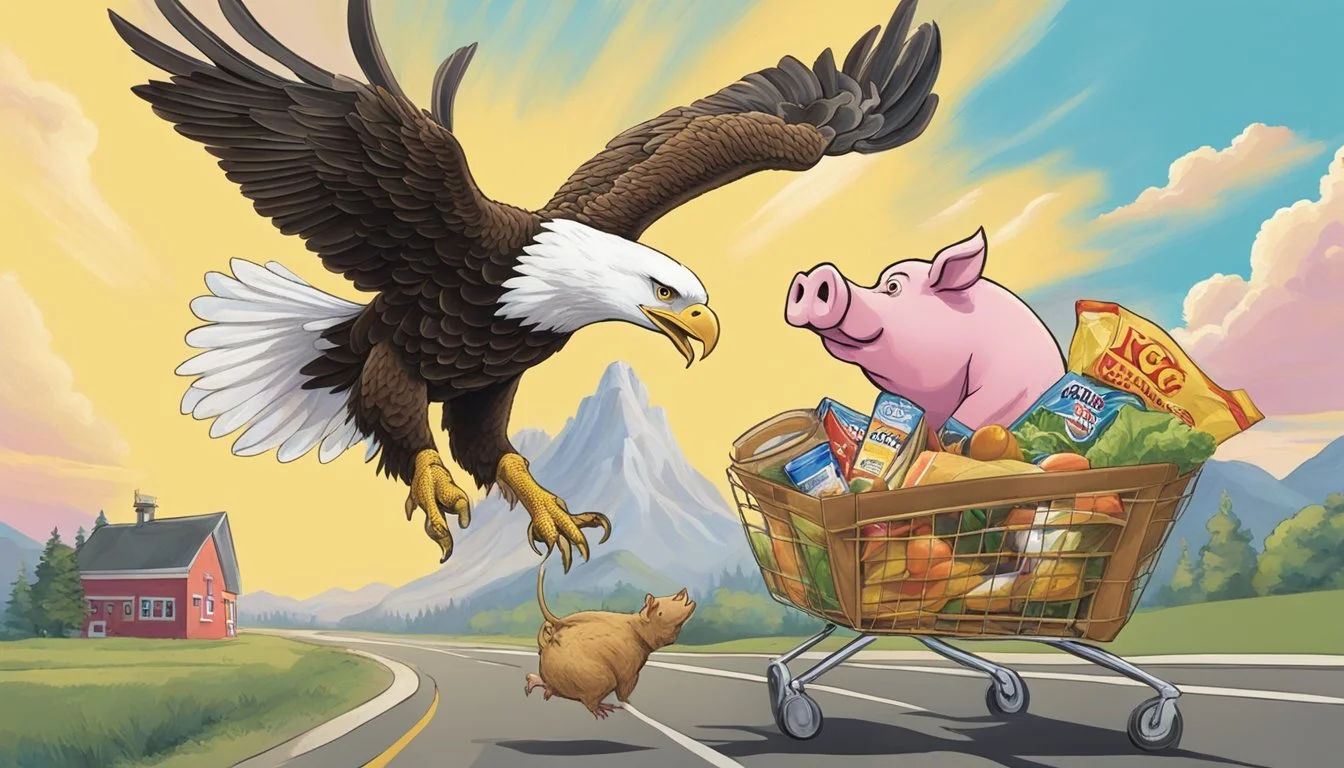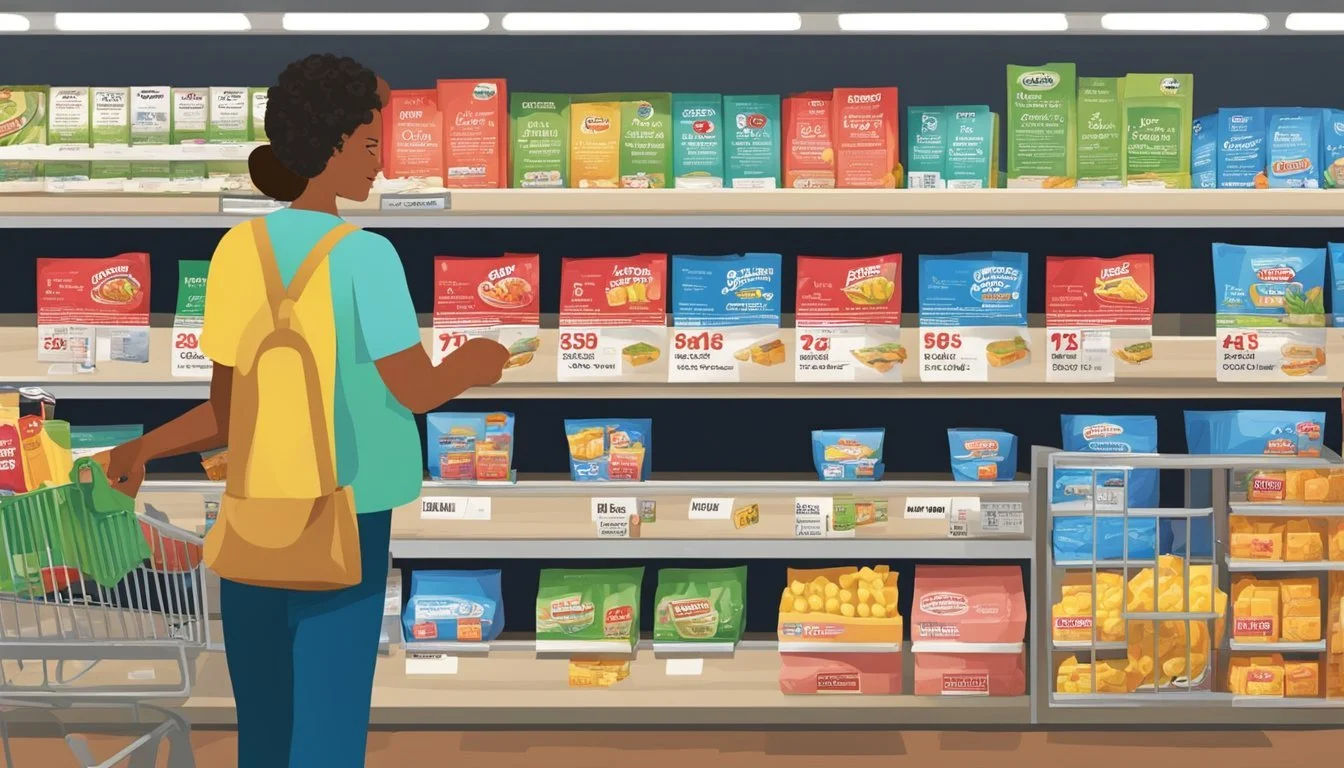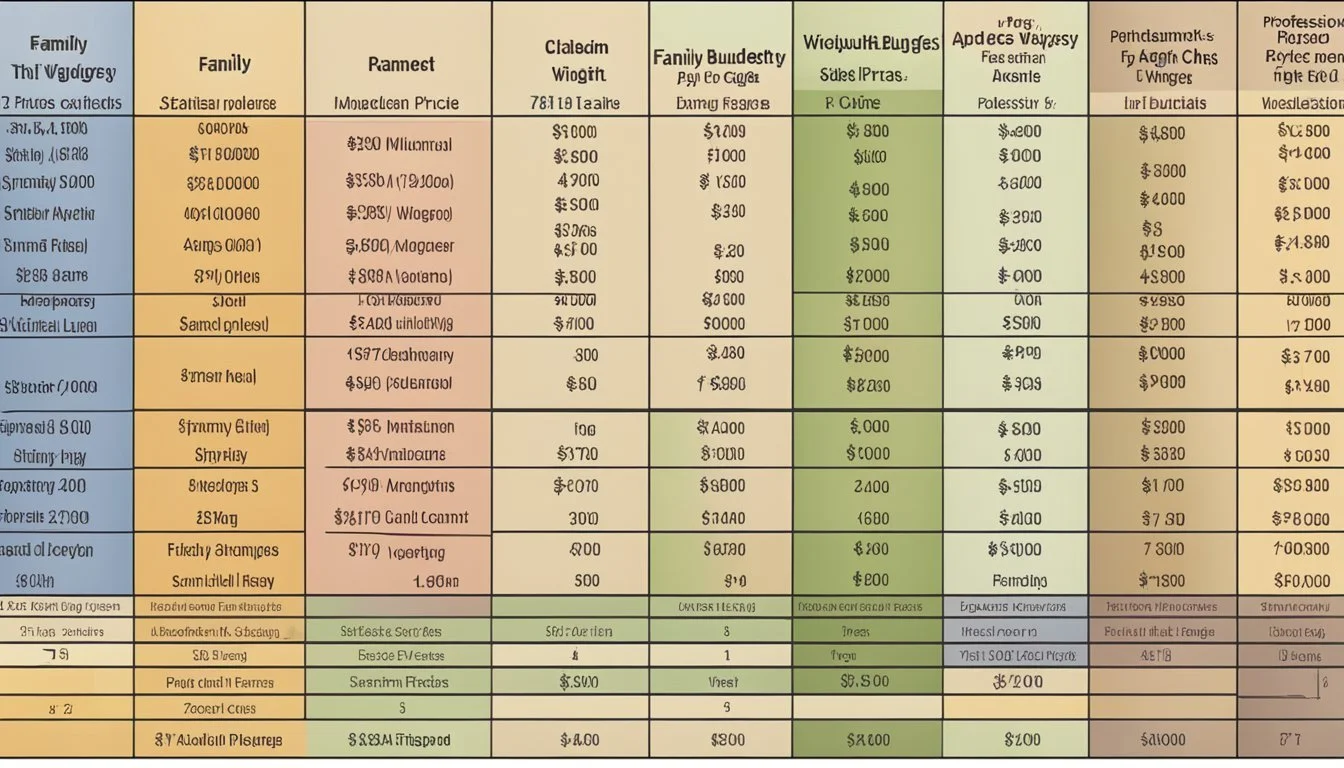Is Giant Eagle Cheaper Than Piggly Wiggly?
A Comparative Price Analysis
Part of Our Grocery Store Guide with Details on Giant Eagle Prices and Piggly Wiggly Prices
When comparing the pricing of grocery chains, consumers often look at the range of products offered, the quality of items, and most importantly, the value for their dollar. In the United States, two notable supermarket chains that come into focus for price comparison are Giant Eagle and Piggly Wiggly. Both chains serve their respective regions but are known for different pricing strategies. Giant Eagle caters to the Midwestern and Mid-Atlantic regions with an emphasis on convenience and their loyalty programs, while Piggly Wiggly, based in the Southern US, is often associated with a local, community-oriented shopping experience.
Price comparison across different supermarkets can prove to be complex due to various factors like geographical location, store brand offers, and discount programs. Giant Eagle is traditionally perceived as a more premium grocery chain and has been reported to have higher prices compared to some of its competitors. This perception stems from factors such as location convenience, as many of its stores provide easy access with nearby bus stops, possibly allowing the chain to maintain higher price points.
On the other hand, Piggly Wiggly may offer a different value proposition. While not always the cheapest option, it often presents competitive prices and weekly deals that attract budget-conscious shoppers. The real value for customers might not be just in the straightforward product pricing but also in the overall shopping experience, promotions, and customer service — all factors that contribute to the final cost. To determine whether Giant Eagle is cheaper than Piggly Wiggly, one would need to consider a variety of these elements and possibly conduct a detailed market comparison.
Overview of Supermarket Chains
Giant Eagle and Piggly Wiggly are two distinct supermarket chains that serve the grocery needs of different regions within the United States.
Giant Eagle, with its inception dating back to 1918, primarily operates in the Midwestern and Mid-Atlantic regions. The chain is notable for its extensive range of groceries and over-the-counter drugs. It has fostered a robust presence with approximately 474 locations, tailoring services to a diverse customer base with offerings that range from conventional food products to pharmacy services.
Piggly Wiggly, founded in 1916, stakes its claim as the first self-service grocery store. It is a name synonymous with Southern charm and operates chiefly in the Southern US. The brand boasts around 624 stores, marking a significant footprint in the region. Piggly Wiggly's approach to groceries combines a focus on customer needs with a touch of local flavor, offering a variety of food items including fresh, locally sourced produce when available.
While both supermarkets supply a comprehensive assortment of groceries, their geographical locations do not broadly overlap, which affects direct price comparisons. Each chain adapts its pricing strategy to the local markets it serves, factoring in regional economic conditions and consumer preferences.
Supermarket Chain Region Served Number of Locations Giant Eagle Midwest and Mid-Atlantic 474 Piggly Wiggly Southern US 624
Giant Eagle and Piggly Wiggly remain staples in their regions, contributing significantly to the variety of supermarket chains available to American consumers, each with its own set of strengths in terms of regional accessibility and product offerings.
Pricing Strategies
When evaluating grocery chain pricing, particularly between Giant Eagle and Piggly Wiggly, it's crucial to consider their individual pricing strategies. These strategies are often closely guarded secrets to maintain competitive advantage but can be discerned through careful observation of their price points and promotional activities.
Giant Eagle tends to operate on a high/low pricing strategy, where standard prices are higher, but they frequently offer sale prices on select items. This approach attracts customers looking for deals on specific products. Piggly Wiggly, on the other hand, might employ everyday low price (EDLP) strategy, aiming to provide consistently low prices across a broader range of products, rather than focusing on weekly sales.
Furthermore, both stores offer private label or store brand items, which tend to be cheaper than national brands. Price comparisons demonstrate that customers can save by opting for these in-house brands. For example, a grocery list with items like milk and eggs can show over $20 in savings when store brands are chosen.
A key aspect of these strategies is the psychological impact on shopping behavior. Giant Eagle's sales can create a sense of urgency and savings, while Piggly Wiggly's EDLP may instill a perception of overall value.
Strategy Type Giant Eagle Piggly Wiggly High/Low Often Used Less Emphasis EDLP Less Emphasis Often Used Private Label Available Available
Consumers interested in the cheapest overall basket may lean towards Piggly Wiggly, while those drawn to specific discounted items might prefer Giant Eagle during sales. Individual shopping preferences and habits will ultimately influence which store is perceived as cheaper.
Comparing Grocery Items
When evaluating grocery stores, it's essential to consider the variety and pricing of items across different categories. This section focuses on the specifics of how Giant Eagle and Piggly Wiggly compete in terms of their grocery offerings.
Produce Selection
Giant Eagle is known for its wide range of fresh produce, offering a variety of fruits and vegetables. Customers can find everything from crisp apples to freshly picked tomatoes. On the other hand, Piggly Wiggly also presents a commendable produce section with an emphasis on healthy, fresh vegetables such as bananas, potatoes, and leafy greens.
Meat and Deli
In the meat department, both stores provide customers with selections of chicken breasts, ground beef, and bacon. However, Giant Eagle often showcases a broader range of premium meats and deli items, including specialty cheeses and ready-to-eat options. Piggly Wiggly stocks standard meat selections adequate for everyday cooking.
Dairy and Eggs
The dairy sections at both grocery chains are thoroughly stocked with essentials like milk, cheeses, and butter. Piggly Wiggly's offerings in dairy and eggs aim at affordability, often presenting their store brand products alongside name brands. Giant Eagle might offer a slightly higher range in terms of specialty dairy products.
Dry and Packaged Foods
For dry and packaged foods such as peanut butter, mayonnaise, and all-purpose flour, both retailers provide a mixture of national brands and their generic store brands. These kitchen basics are competitively priced, with Giant Eagle sometimes featuring more options in gourmet or organic selections.
Frozen Foods and Snacks
Shoppers looking for frozen foods and snacks will encounter a variety of choices at both stores. Giant Eagle often includes a range of healthy and sweet treat options, while Piggly Wiggly competes with a selection that balances quality and value, catering to shoppers looking for everyday snacks and frozen staples.
Discounts and Savings
When comparing grocery savings between Giant Eagle and Piggly Wiggly, customers should consider the variety and frequency of weekly deals and the benefits offered by loyalty programs. These factors are significant for a family of 4 planning their meal plan and looking to maximize savings.
Weekly Deals
Giant Eagle advertises numerous weekly discounts, which can be accessed by clipping coupons from their sale pages. Families can plan their shopping around these deals, potentially saving on their weekly meal plan by purchasing discounted items.
Current offers: Various discounts on grocery items.
Savings tip: Check Giant Eagle's sale pages regularly.
Piggly Wiggly provides weekly savings too, often in the form of discounts that can benefit shoppers. Their stores may offer different deals, ensuring that customers can make use of sales to reduce the cost of their shopping.
Current offers: Special prices on select products.
Savings tip: Review local flyers for current sales.
Loyalty Programs
Giant Eagle features a loyalty rewards program that allows customers to earn points on their purchases. Accumulated points can lead to discounts on future shopping trips or other perks, such as discounted fuel. Regular shoppers can leverage this program for ongoing savings.
Earning rewards: Points per dollar spent.
Benefits: Discounts on groceries and fuel.
Piggly Wiggly does not have any specific loyalty discounts mentioned in the search results. However, customers should inquire in-store for any localized loyalty offers that may not be widely advertised online.
Earning rewards: Information may vary by store.
Benefits: Potential store-specific promotions and discounts.
Store Brand vs. Name Brand
When comparing store brands and name brands, shoppers will often find that store brands, sometimes referred to as 'generic store brands', present significant savings. Store brands are typically priced lower than their name brand counterparts, with customers potentially saving an average of 25%, adding meaningful value for budget-conscious consumers.
They are not universally low marks in terms of quality. Many store brands deliver high-quality products that rival or even exceed name brand offerings. This is especially true as retailers have increased their focus on developing premium store brand products.
For example, consumers may find store brand groceries that match the quality and taste of name brands. The onus for maintaining food safety and nutritional value lies equally on both store and name brands, as they adhere to the same manufacturing and processing standards.
Aspect Store Brands Name Brands Price Generally lower Generally higher Quality Can be high; varies by product Often high; varies by product Availability Exclusive to retailer Widely available Perceived Value High for cost-conscious shoppers Brand loyalty might add value
Retailers like Giant Eagle and Piggly Wiggly offer their own store brands, which can be a savvy choice for shoppers looking to stretch their dollars further. While the selection may vary, the commitment to quality often means that the differences between store brands and name brands are minimal. Hence, choosing between them may come down to personal preference or specific product attributes rather than sweeping generalizations about quality or value.
Consumer Perceptions and Surveys
Surveys and consumer ratings offer valuable insights into the cost comparison between Giant Eagle and Piggly Wiggly grocery chains. Customers often evaluate their shopping experience based on price, service quality, and overall satisfaction.
A consumer survey reveals that Piggly Wiggly, with its strong presence in the Southern US, has a dedicated customer base that appreciates its regional focus. However, service ratings suggest variability across locations, influencing perceptions of value.
Giant Eagle, largely operating in Midwestern and Mid-Atlantic regions, has consumer surveys indicating a reputation for consistent service and a diverse product range, but they don't always lead in pricing.
Ratings obtained from various surveys show that neither Giant Eagle nor Piggly Wiggly consistently undercuts the other across all product categories. Price perception is often influenced by regional pricing strategies, and discounts offered by loyalty programs.
Grocery Chain Average Consumer Rating Giant Eagle 4.2/5 Piggly Wiggly 3.9/5
The table reflects aggregated consumer ratings, citing Giant Eagle with a slight edge over Piggly Wiggly. It's important to note that these figures can change based on new customer reviews and should be considered as a general guide rather than an absolute measure.
In summary, both chains have areas where they excel and others where they do not, as noted by customers in their reviews and surveys. These consumer inputs have a significant influence on the chains' reputations as cost-effective grocery options.
Cost Comparison for a Family Budget
When considering a family of four's grocery budget, meal planning is critical to balancing healthy, inexpensive choices with the household's financial constraints. Both Giant Eagle and Piggly Wiggly offer a range of options that can cater to a family's needs for breakfasts, lunches, and dinners.
Giant Eagle often provides competitive pricing, particularly when taking advantage of their weekly sales and discounts. They offer a variety of options for fresh produce and meats, which are essential for a balanced diet. However, pricing may fluctuate based on location and availability of local produce.
Sample Breakfast: Oatmeal, bananas, milk.
Sample Lunch: Turkey sandwiches, apple slices, yogurt.
Sample Dinner: Grilled chicken, mixed vegetables, rice.
Piggly Wiggly, known for its local charm and friendly service, also has a selection geared towards cost-conscious consumers. Their store brand items are generally priced lower and can make a considerable difference in a family's grocery bill.
Sample Breakfast: Whole grain toast, eggs, orange juice.
Sample Lunch: Salad with hard-boiled eggs, crackers, cheese.
Sample Dinner: Spaghetti with marinara sauce, green beans, garlic bread.
When it comes to feeding a family of four, especially on a budget, the key is to look for sales, use coupons, and consider the store brand products that both Giant Eagle and Piggly Wiggly offer. These strategies can ensure that meal plans remain both healthy and inexpensive. Each family's preference for breakfast, lunch, and dinner ingredients may tip the scales in favor of one store over the other in terms of overall cost-effectiveness.
Regional Availability and Presence
Giant Eagle and Piggly Wiggly are prominent grocery chains in the United States, each with a significant regional presence. Giant Eagle operates primarily in the northeastern states, with a strong focus on Pennsylvania, the headquarters state. It boasts numerous locations throughout the region, extending its reach to parts of Ohio, West Virginia, Indiana, and Maryland.
Piggly Wiggly, in contrast, has its roots in the Southern United States. It is widely recognized for its accessibility to shoppers in this region, offering a range of grocery items. The chain has a storied history of serving local communities, with numerous stores across various states.
In terms of local presence and community integration, certain areas may be served by smaller supermarket chains such as County Market, which cater to their respective local markets. These chains can sometimes be key players at the county or city level, offering an alternative to larger national chains.
The table below lists the regions primarily served by Giant Eagle and Piggly Wiggly:
Grocery Chain Primary Service Regions Notable Presence in States Giant Eagle Northeastern United States Pennsylvania, Ohio Piggly Wiggly Southern United States Southern States County Market Specific local markets Varies by location
Each chain's presence is tailored to cater to their distinct customer bases within their respective regions. The location of these stores is pivotal to their accessibility, market dominance, and ultimately, the pricing strategies they adopt.
Alternative Shopping Options
When considering grocery shopping, consumers have several alternatives to Giant Eagle and Piggly Wiggly. Here are some notable options:
Aldi: Known for its cost-efficiency, Aldi continues to be a strong contender in the grocery market, often offering lower prices.
Walmart: As one of the largest retail chains, Walmart offers a variety of products with competitive pricing.
Kroger: As a widespread grocery chain, Kroger offers a large selection of items and frequent promotional deals.
Meijer: Combines grocery with department store offerings, often at reasonable prices.
Costco: A membership-based warehouse club known for its bulk products and savings.
Wegmans: Offers a unique shopping experience with a wide variety of brands and organic options.
Market Basket: Known for reasonable pricing along with a local market feel.
Hy-Vee: A regional chain providing quality groceries and health markets.
Food Lion: A grocery store chain offering affordable prices, especially with store-brand items.
Weis: Regional supermarket known for a solid balance of quality and value.
Safeway: A well-established grocery store offering regular discounts through its Just for U program.
Acme: Provides a competitive selection of groceries, often featuring weekly specials.
Whole Foods: Specializes in organic and natural products, but generally at a higher price point.
Amazon: Offers grocery delivery services for a wide range of products, including Whole Foods selections.
Target: Features a growing grocery section with competitive pricing on both national brands and its own store brands.
These retailers provide a variety of shopping experiences and pricing strategies to meet different consumer needs.










